15 Best Cloud Management Platform
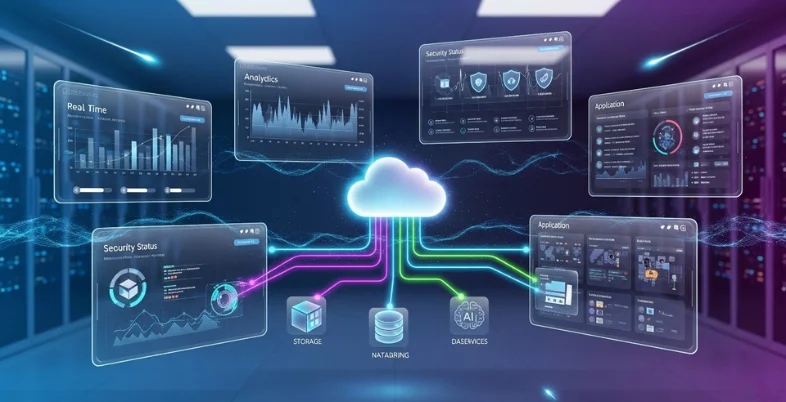
Cloud Management Platform (CMP) refers to the single piece of software that is used to collectively manage, monitor and optimize multi-environment, i.e., multi-cloud, cloud resources, including public, private and hybrid clouds. With growing adoption of cloud computing in organizations as a potential means of scalability, flexibility and cost efficiency, there has been an increased need to gain centralized control of complex infrastructures. CMPs furnish this control by ensuring that businesses have one dashboard through which they can manage cloud operations, automate workflows, have compliance and ensure security standards are upheld.
Applications on these platforms typically provide resource provisioning, workload automation, cost tracking, performance monitoring, governance facilities, and risk management software. CMPs enable seamless multi-cloud management by integrating with vendors such as AWS, Microsoft Azure, and Google Cloud, reducing the risk of vendor lock-in. They also enhance operational efficiency by identifying underutilized resources, balancing workloads, and ensuring compliance with security policies.
In the recently competitive (digital) world which is characterized by the need of agility and cost reducing, a Cloud Management Hub enables IT to work on new capabilities instead of manually managing. In the case of large enterprises operating huge infrastructure and small businesses using cloud solutions, CMPs have a major role and these sorts of roles may include ensuring that the cloud resources are utilized efficiently, secured and in line with the business objectives.
What Is the Purpose of a Cloud Management Platform?
- Centralized Control– Control all cloud environments in one dashboard.
- Cost Optimization -Monitor and trim avoidable cloud costs.
- Resource Automation -Architecture automation of provision provision and scaling of workload.
- Multi-Cloud Integration – Easily manage AWS, Azure and GCP and more.
- Improved Security services -Monitor and enforce rules in real- time.
- Performance Monitoring- Manage system health and applications performance.
- Scalability – Wait longer to match the changing business and work demands.
- Operational Efficiency – less manual work and automated cloud.
List of Best Cloud Management Platform
1. VMware vRealize Suite
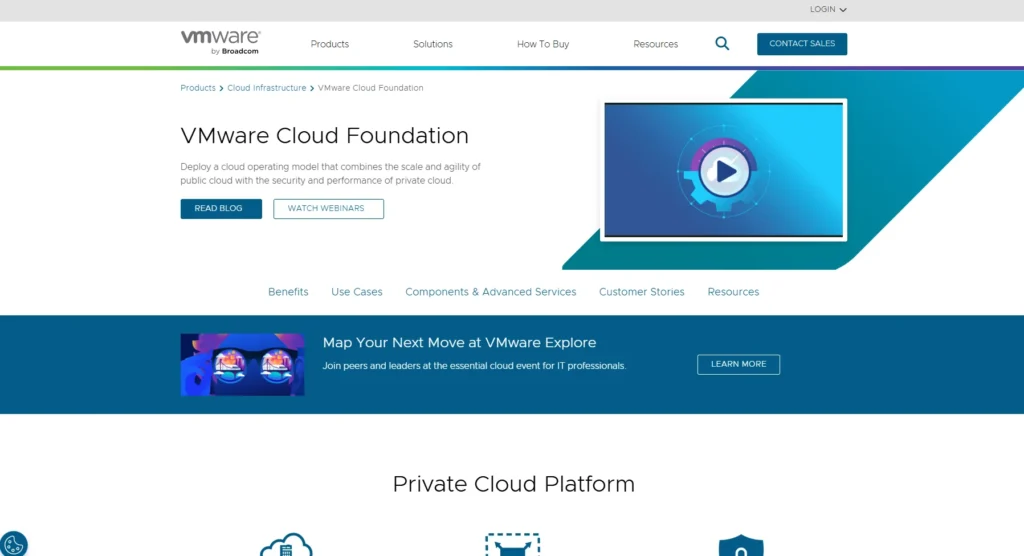
VMware vRealize Suite is a cloud management software that aims at providing automation, operations and governance of hybrid and multi-clouds. It has given the businesses the capability of managing resources in a well-organized way using an application in the large mass of public cloud, a conglomerate of personal clouds as well as an application that is virtualized.
Thanks to sophisticated automation features, IT staff has become able to offload workloads much faster, implement system governance procedures, and centrally control performance indicators. The platform enables intelligent functionality, assisting organizations to cut down wastage, enhance performance and provide cost-saving suggestions based on real-time analytics and foresight insights.
VMware vRealize also fits well with leading cloud platforms such as AWS, Azure, and Google Cloud, and it enables enterprises to make use of flexibility and yet prevents them against vendor lock-in. It has a strong security structure that makes it comply with industry standards, and thus it applies to organizations whose sectors are highly regulated.
VMware vRealize offers automation, monitoring and optimization functionalities all in a unified suite which allows IT personnel to concentrate more on cloud innovations as opposed to managing it on a day to day basis which makes it a perfect option to a large business venturing into the cloud with requirements of scalability, management and efficiency.
Key Features:
- Multi-cloud management on a centralized basis
- Smart workload automation
- In real-time, analytics and monitoring
- Chargeback tools and cost optimization Cost optimization
- Smooth compatibility with big clouds
- Governance and compliance oriented towards policy
- Forecasting performance information
2. Morpheus Data
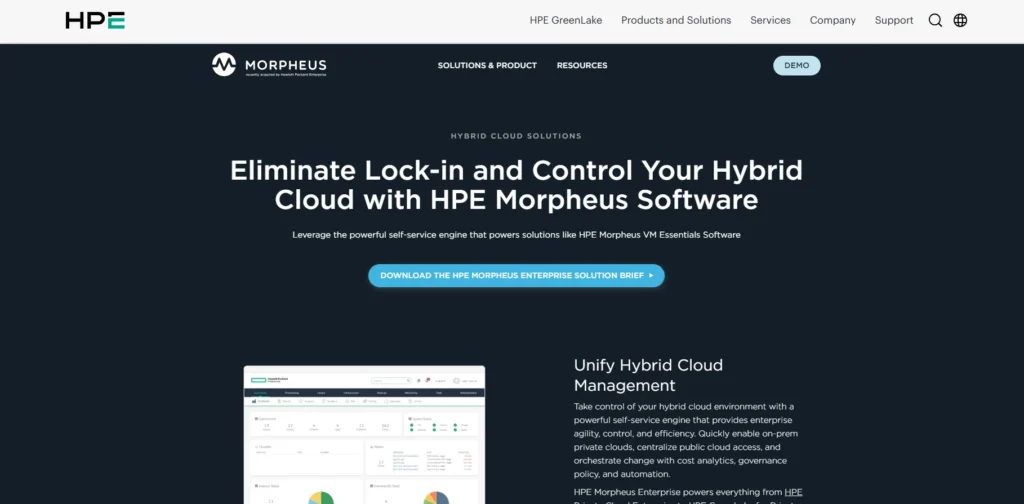
Morpheus Data is an enterprise multi-cloud management and application orchestration platform that is optimized to meet the challenges across the enterprise, service provider and DevOps. it provides a single interface to deploy, administrate and workload optimization of the cloud environment whether on a public, hybrid or a resident cloud. Morpheus has more than 90 integrations to ensure organizations do not experience vendor lock-in such as AWS, Azure, Google Cloud, VMware, Kubernetes, and OpenStack. Its self-service provisioning portal and the policy-based governance assists teams to have a hold on their operations, as well as enhancing their productivity.
The automation capabilities of the platform will optimize the deployment of applications, whereas its cost analytics helps optimize costs. Audit trails, and Role-Based Access Control (RBAC) improve conceptions of compliance and security. Morpheus also works very well with hybrid IT environments thus making a transition between on-premise and cloud infrastructure very easy. Morpheus offers the agility and control to enable modern cloud operations whether you need rapid application development, IT modernization, or simply streamline the use of your resources.
Key Features:
- Orchestrating and provisioning in a multi-cloud environment
- More than 90 cloud and IT tool integrations
- Self service provisioning portal
- RBAC, policy-based governance
- Automated use of applications
- Analytics and optimization of costs
- The PaaS tool hybrid IT support and migration
3. IBM Cloud Pak Multicloud Management
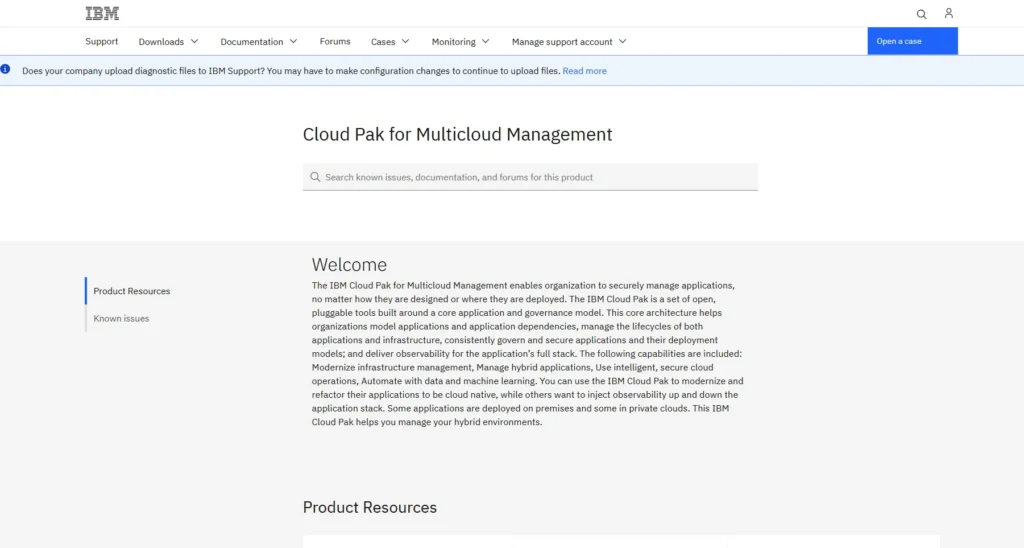
IBM Cloud Pak for Multicloud Management is a container-based software created to support application management, infrastructure management, and security management across various cloud environments. It offers an integrated dashboard to oversee, automate, and protect workloads on the public, hybrid and the private cloud. It is scaled up on the platform of Red Hat OpenShift, protecting both flexibility and scalability and offering policy-driven automation of the application deployment and infrastructure management.
Using powerful AI-powered insights, IBM Cloud Pak enables companies to identify and rectify performance before it can affect operations. It assists in application lifecycle management, security compliance test and infrastructure visibility in complex IT systems. It also helps the governance in a way that uniform policies are implemented in different environments thus limiting the risks and overhead of operations. Targeted towards businesses that require a strong multi-cloud management tool with the AI enhanced, it provides the scalability and significant integration to be able to tie to existing IT workflows.
Key Features:
- Multi-cloud unification dashboard
- Operational insights made with AI
- Governance and automation based on policy
- Application-lifecycle management
- Security and compliant surveillance
- Joint with Red Hat OpenShift
- Visibility in infrastructure and workload
4. BMC Helix Cloud Control
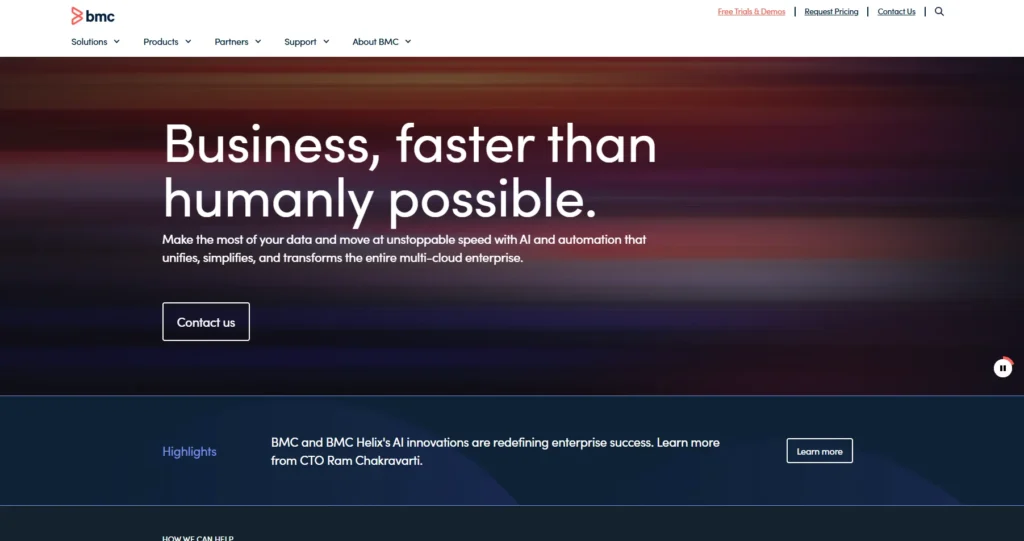
BMC Helix Cloud Management is an AI driven cloud management Hub that offers cost management, resource optimization, and service provisioning to hybrid and multi-cloud environments. It allows enterprises to achieve insights into the use of the cloud, maximize spending and drive regulatory compliance across the enterprise through an easy to use platform. Popular cloud services AWS, Azure, and Google Cloud can be also used with the help of the solution, so it is possible to operate across multiple infrastructures without interrupting performance.
In the area of cloud provisioning, BMC Helix provides smart automation, and cost analytics enable the company to determine the areas of underutilization and possible cost savings. Its governance characteristics make sure that workloads reply to safety and compliances demands without augmenting administrative efficacy.
The architected platform is highly scalable, and most IT administrators and business teams will find it easy to handle the operations of the cloud. With an integrated approach that includes automation, AI knowledge and financial control, BMC Helix enables organisations to enhance speed of digital change, and retain control of all operations.
Key Features:
- One cloud, multi cloud visibility and optimisation
- Automatic analytics and suggestions AI
- Cloud provisioning automation and scaling
- Governance implementation and compliance
- Application of resources tracking
- Self service provisioning portal
Also Read:- Cloud Security Posture Management Tools
5. CloudBolt
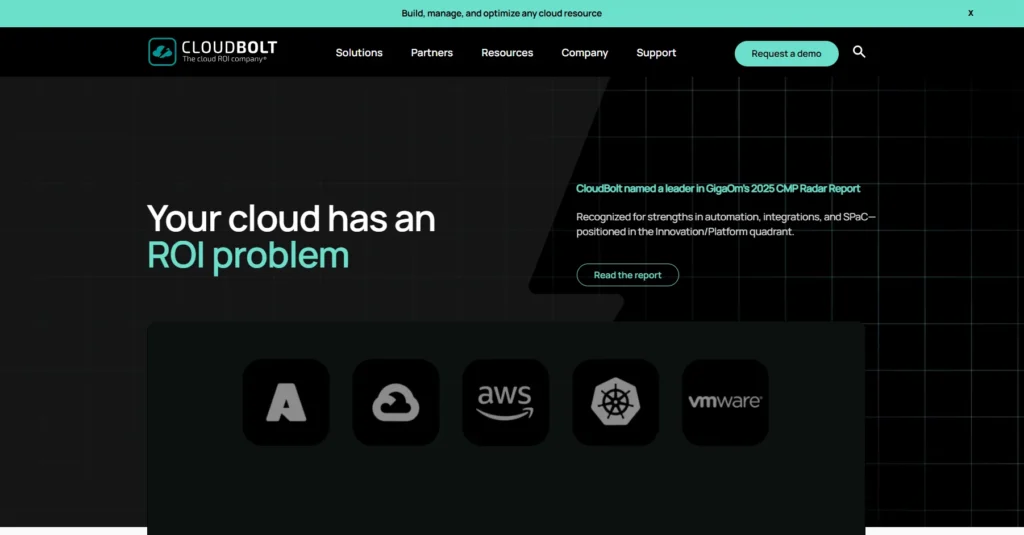
CloudBolt is a reconfigurable and versatile, clout management platform to simplify the multi-cloud and hybrid operations of the enterprises. It offers a distributive point of coordination in terms of provisioning, administration, and optimization of resources of different cloud vendors, namely AWS, Azure, Google Cloud, and VMware. CloudBolt facilitates the concept of self service IT that allows teams to rapidly deploy applications and infrastructure, but avoids such proliferation by enforcing policy controls.
The platform provides a great extent of integration with DevOps, configuration management systems and IT service management (ITSM) platforms. Cost optimization features in CloudBolt enable users to track spending, verify unused resources and institute spending restrictions. It can also orchestrate hybrid clouds, which make it more convenient to organizations to move workloads between cloud and on-premises datacenters. CloudBolt allows businesses to go faster by having agility and a user-friendly interface, as well as a powerful programmability with maximum automation and excellent governance framework.
Key Features:
- Multi-cloud orchestration and orchestration Hybrid
- Self-service providing portal
- Cost-tracking and cost-optimization utilities
- Integration with DevOps and ITSM tools Connection to DevOps and ITSM software
- Policy-driven governance
- Automatic deployment of work load
- Resource management of multi environments
6. Flexera EVM
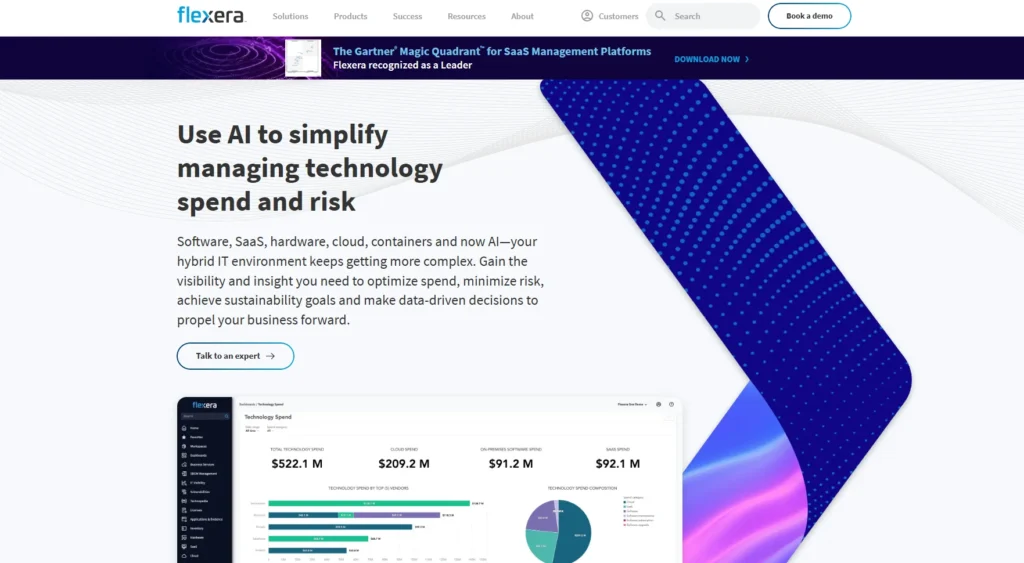
Flexera Cloud Management Platform provides cloud end-to-end visibility, optimization, and governance of complex clouds. It is based on organizations that deal with many public and hybrid clouds and their operators and focuses all insights into one dashboard. Flexera allows the automatization of provisioning, cost analysis, and policy compliance, which helps the enterprises save extra costs and ensure adherence.
Its advantages are the control of cloud costs, migration planning of applications, and asset tracking. The platform connects to the large cloud providers and allows using strong tagging systems to track resources on a very granular level. Compliance and security controls make sure that the workloads are relevant according to the organizations and regulations. Flexera is also equipped with features that offer descriptive analytics to guide IT leaders to make workload placement and optimization data-informed decisions. This explains why it comes in handy as a preferred option of businesses that require transparency, efficiencies and governance in multiple cloud environments.
Key Features:
- Cost visibility and optimisation in multi-cloud
- Automatic provisioning and scale-out
- Tracking of assets and tagging of resources
- Security and implementation of compliance
- Migration planning of application
- Precise analytics and reporting
- Compatibility with large clouds
7. Scalr
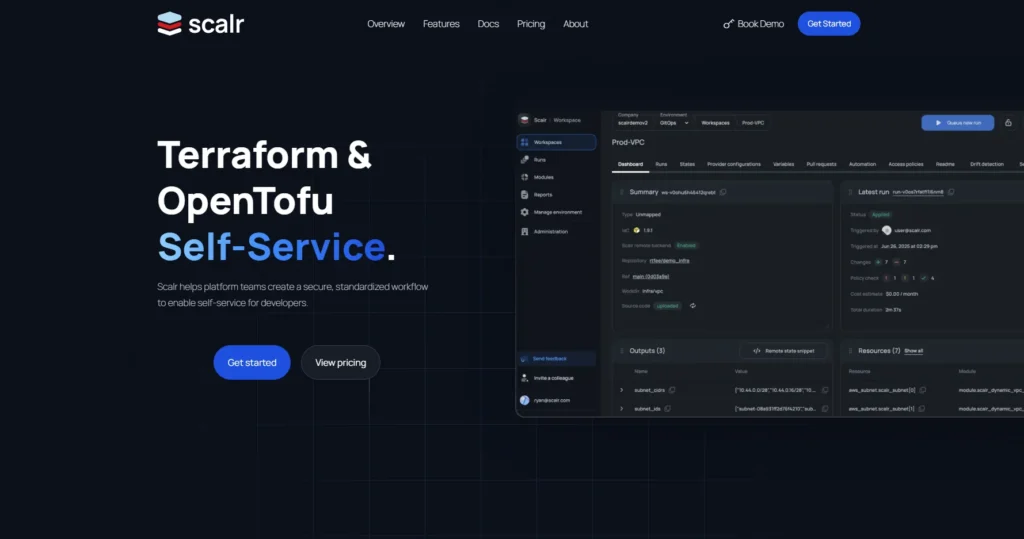
Scalr is a policy-based cloud management tool with policy governance, automation and scalability with any cloud computing infrastructure. It allows businesses to handle workloads in AWS, Azure, Google Cloud, and even on-premises clouds using a central and customizable interface. The tactic of Scalr focused on flexibility because various teams have the ability to be independent but still follow corporate policies.
Scalr also simplifies provisioning, scaling and configuration management with powerful automation tools. The model of its governance guarantees persistent security and compliance and uses its cost management tools to control spending on clouds. Scalr also deploys infrastructure as code through Terraform, and hence it fits DevOps in teams that deal with complex deployments. With a mix of centralized control and team-specific flexibility, Scalr provides a way to manage cloud in a governance friendly, yet not agility sacrificing manner.
Key Features:
- Multi-cloud governance by policy
- Infrastructure as code Terraform
- Autoscale and autoprovisioning
- Centralised management tools on costs
- Compliance enforcing security
- Multi-team cloud-friendly support
- Integration with large scale cloud vendors
8. Zerto (HPE)
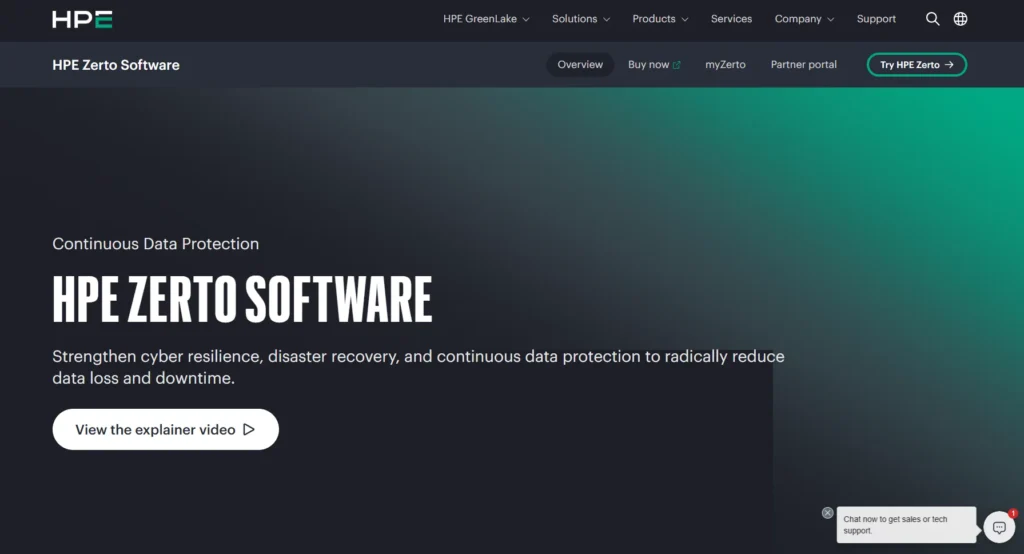
Zerto is a cloud management and disaster recovery platform that was acquired by Hewlett Packard Enterprise, which helps business continuity assurance in hybrid and multi-cloud surroundings. In addition to being widely known for disaster recovery capabilities, Zerto also provides strong cloud-based workload mobility, automation and cost management capabilities. It enables companies to duplicate workload in different cloud brands like AWS, Azure and Google Cloud, resulting in minimal interruptions in case of disruptions.
The platform also eases movement between cloud and on-premises environments and thus it becomes easier to adopt or escalate the use of multi-cloud strategies. Its automation features automate replication, failovers, and deployment of workload. Zerto can also be used with the familiar IT tools to integrate the workflow processes and its real-time analytics enables the IT teams to control costs and performance. Whether you are a business that needs an advanced cloud management and enterprise levels of disaster recovery, Zerto has come up with a unified solution on performance, protection and flexibility.
Key Features:
- Workload recovery and replication of disaster
- Mobile multi-cloud in AWS, Azure, GCP
- Automated failover and failback Automated
- Monitoring and analytics in real time
- Automated transfer of the workload
- Enterprise IT systems integration
- Cost management and optimisation abilities
9. Apptio Cloudability
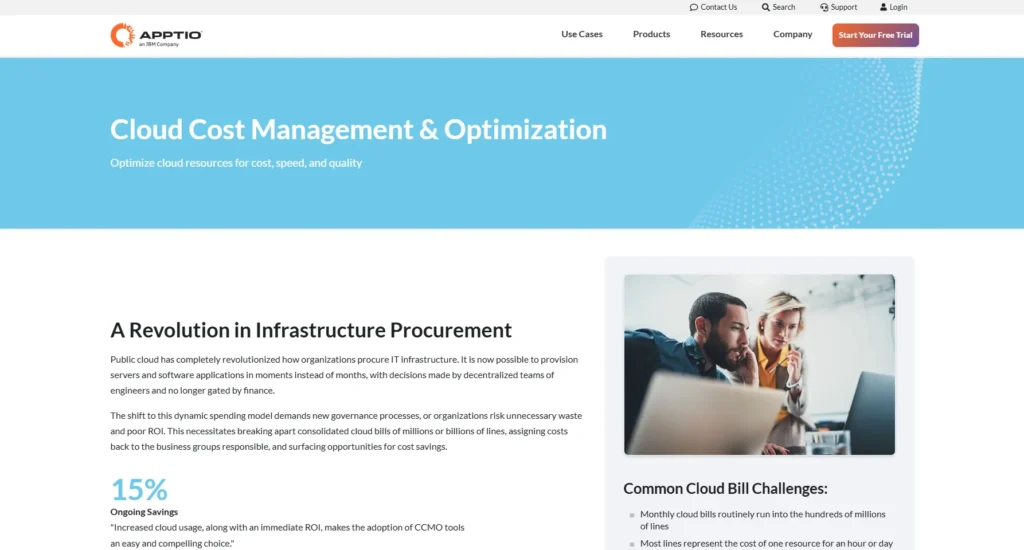
Apptio Cloudability is a cloud financial management system that is optimised to streamline costs, manage budgets and enhance financial accountability within cloud platforms. It specializes in cloud cost transparency, which allows organizations to manage and trace the spending activities on AWS, Azure, Google Cloud, and other cloud vendors. Cloudability enables teams of IT, financial, and business people and teams to work together, with actionable intelligence about cloud spend, consumption patterns, and areas of cloud value waste.
The platform uses budgeting, forecasting as well as chargeback/showback models that enable the allocation of cloud costs to individual teams/projects in an organization. Real-time data analytics provided by Cloudability gives visibility to underutilized resources, and recommends rightsizing opportunities that can be exploited to achieve maximum efficiency. It is Hybrid and easily connects to the main cloud providers; it also has robust solutions, such as tagging and control capabilities to provide financial control. This is what makes it a very useful tool to organizations wishing to match its cloud investments with business goals and at the same time be cost effective.
Key Features:
- Current view of cloud expenses
- Forecasting and budgeting aids
- Chargeback and showback The tapping facility is capable of chargeback and showback.
- Resource right-sizing suggestions
- Support of key cloud platforms
- Governance controls and tagging
- Identification and cost reduction of waste
10. Cisco CloudCenter Suite
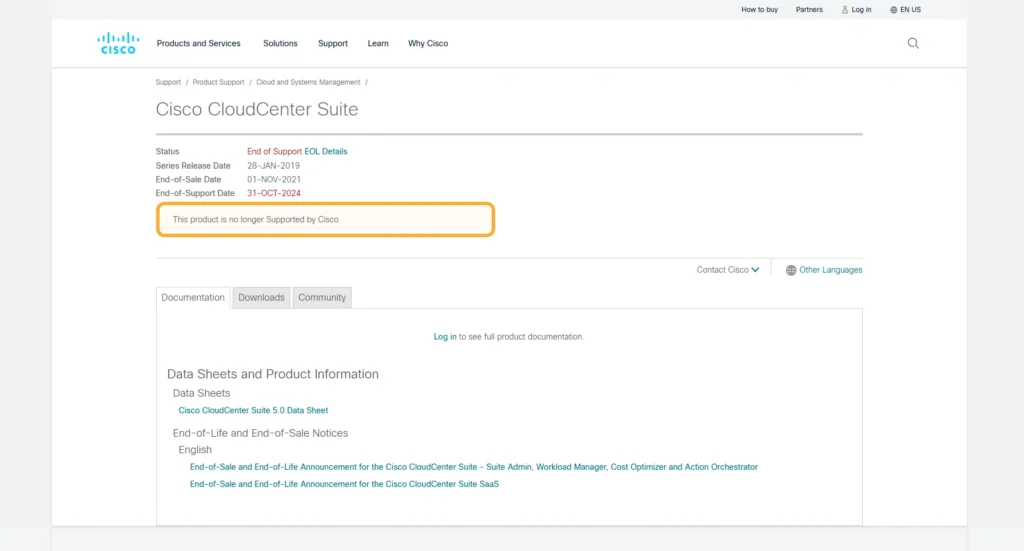
The Cisco CloudCenter Suite is an enterprise-wide multi-cloud management hub that assists organizations in deployment and administration of applications across various clouds in a secure manner. It allows the IT teams to model the applications, deploy and optimize them without compromising the governance and security standards. It allows flexibility and scalability with different workloads because the platform supports both public and private cloud together with hybrid clouds.
Adopting an application-centric model, CloudCenter Suite offers a lifecycle management-oriented model, in which applications are managed effectively in all lifecycle stages, that is, deployment to retirement. It provides cloud-based automation and cost management, and visibility to the cloud resources by basing them on policies. Its operability blends well with DevOps tools and ITSM systems, so it is optimal in enterprises with complicated multi-cloud strategies. The vigorous security system of Cisco secures the likelihood of compliance and provides hesitancy in handling sensitive workload in any cloud alternative.
Key Features:
- Lifestyle management application centric
- Support of multi-cloud deployment Support of multi-cloud deployment
- Automation and governance by policy
- Tracking and optimization cost tools
- DevOps and ITSM tooling integration
- Effective security and compliance safeguards
- Hybrid cloud elasticity
11. Platform9
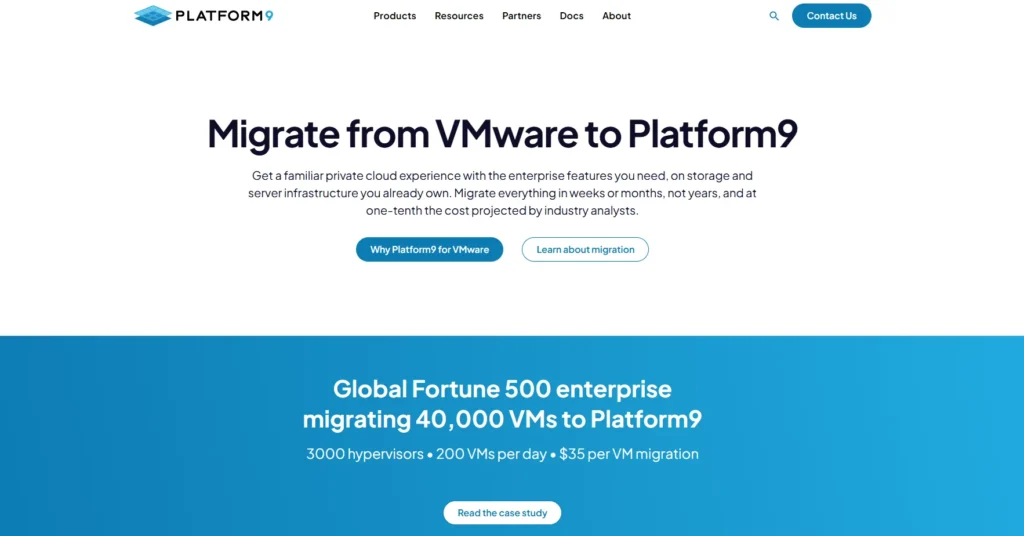
Platform9 is a cloud management platform that is SaaS-based and eases operations of Kubernetes, OpenStack and VMware in hybrid and multi-cloud. It gives centralized management, monitoring and scaling capabilities that do not demand complicated on-premise infrastructure. A managed service The platform is ideal in organizations who can base their Kubernetes containerized workloads which have minimized operational overhead.
Platform9 provides multi-cloud provisioning and works with familiar CI/CDs tools and supports cost optimization. It has policy driven governance which focuses on compliance across work loads and through its monitoring tools, there are real time information on the performance of applications and resource usage. Focusing on usability, Platform9 provides fast onboarding and efficiency in operation which makes it an excellent candidate to modernize the infrastructure with Kubernetes and hybrid cloud solutions in enterprises.
Key Features:
- OpenStack, VMware and Managed Kubernetes
- Cloud management based on SaaS
- Orchestration and Multi-cloud provisioning
- Connection with CI / CD pipelines
- Governance and compliance fuelled by policy
- Online surveillance and analytics
- Efficiency in cost and resources
12. Apache CloudStack
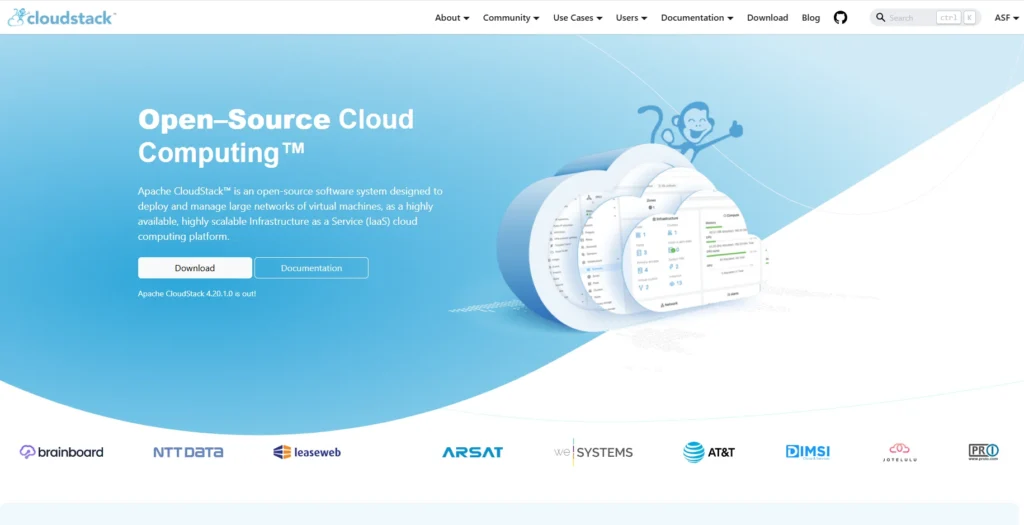
Apache CloudStack is a cloud computing platform open source software, with the aim of deploying very large clouds of virtual machines and providing very available, scale Infrastructure as a Service (IaaS). It is compatible with both private and public clouds with the option of hybrid and is therefore a flexible choice of service providers and enterprise units. CloudStack makes provisioning and management of compute, network and storage resources easier by providing an approachable web based interface and a powerful API.
It can be combined with the most popular hypervisors such as VMware, KVM, and XenServer and it is possible to be flexible in terms of virtualization approaches. CloudStack automates workload scaling and deployment and balancing through its built-in orchestration abilities. Being an open-source project hosted by Apache Software Foundation, it provides transparency, ability to be extended and a thriving community-based support. CloudStack would suit organizations interested in a free, highly customizable, cloud management Hub that does not lock them in to the cloud of a specific vendor.
Key Features:
- Open-source IaaS clouding platform
- Backing of both public and hybrid and private clouds
- Compatibility with VMware, KVM, XenServer
- REST API access and Web-based interface access
- Orchestration and scaling of workloads occurred automatically
- Load balancing and high availability built-in
- Good community support, and customization possibilities
Also Read:- HR Management Software
13. ManageIQ
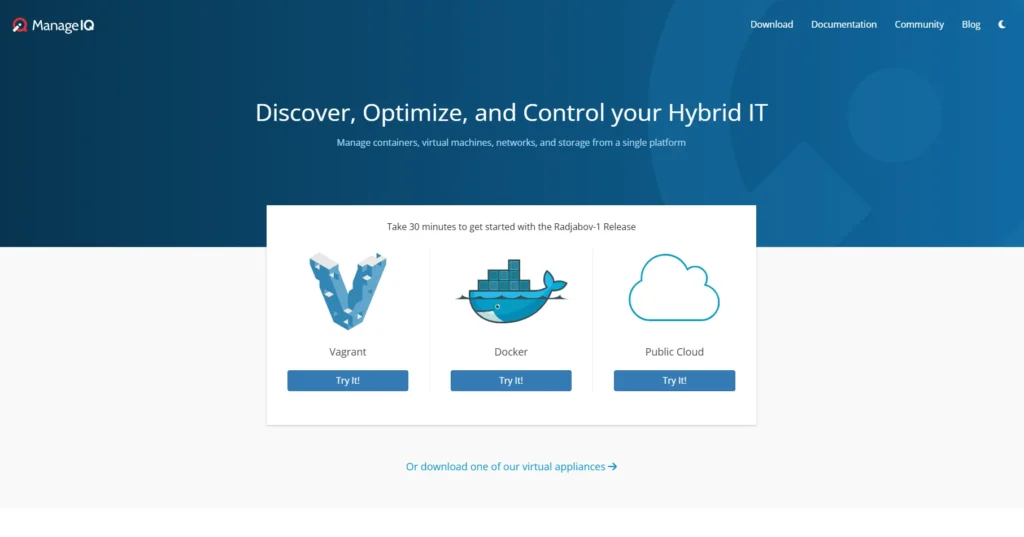
ManageIQ is a cloud management platform written as open source software by Red Hat and aimed at the unified management of hybrid IT environments. It works well with a wide variety of public, private, and virtualization platforms, such as AWS, Azure, Google Cloud, VMware, OpenStack, etc. ManageIQ is open source based and therefore it provides flexibility and customization in organizations in need of a cost effective but robust CMP.
The features offered by the platform are intelligent workload automation, configuration management, and policy enforcement. The tools it offers to manage cost would assist it in tracking and optimizing the use of resources and the analytics and reporting features of it would help in making decisions. ManageIQ is also multi-tenant compatible, and thus it can serve the need of a service provider and enterprise alike. Its provision of heavy integration capabilities and powerful governance solutions allow teams to have power over their routines and increase the versatility of operations.
Key Features:
- Free and extremely customizable
- Public, private and hybrid cloud support
- Smart workload automation
- Cost-tracking optimization tools
- Policy-driven governance
- Integration with large platforms of virtualization
14. CloudHealth by VMware
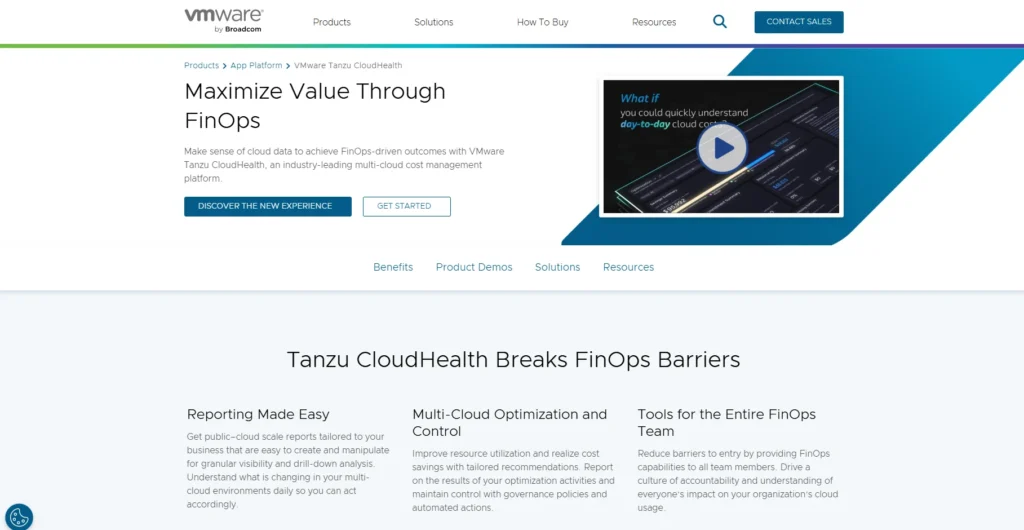
CloudHealth by VMware is one of the top cloud management and optimization platforms centered on financial governance, security and performance management. It helps an organization to analyze, control the costs of the cloud in AWS, Azure, Google cloud, and hybrid environments. CloudHealth can offer extensive reporting, rightsizing recommendations, and cost attributed services in order to maximize ROI in business.
Compliance and security surveillance is also provided, identifying vulnerabilities and making sure that the regulatory works are fulfilled. Its combination with VMware larger cloud offerings increases functionality of multi-cloud visibility and automation. CloudHealth is especially useful to enterprises that have big cloud configurations whose control category of concern is cost management and governance. The ease of use and usability of its interface and actionable insights enable the IT, and finance teams to make informed decisions and uphold their operational efficiency.
Key Features:
- Visibility and cost control across multi-cloud
- Security and compliance monitoring
- Recommendations on rightsizing and elimination of wastes
- Charge back tools and cost allocation tools
- VMware compatibility
- Granular analytics and reporting
- The administration and policy execution
15. CloudCheckr (by NetApp)
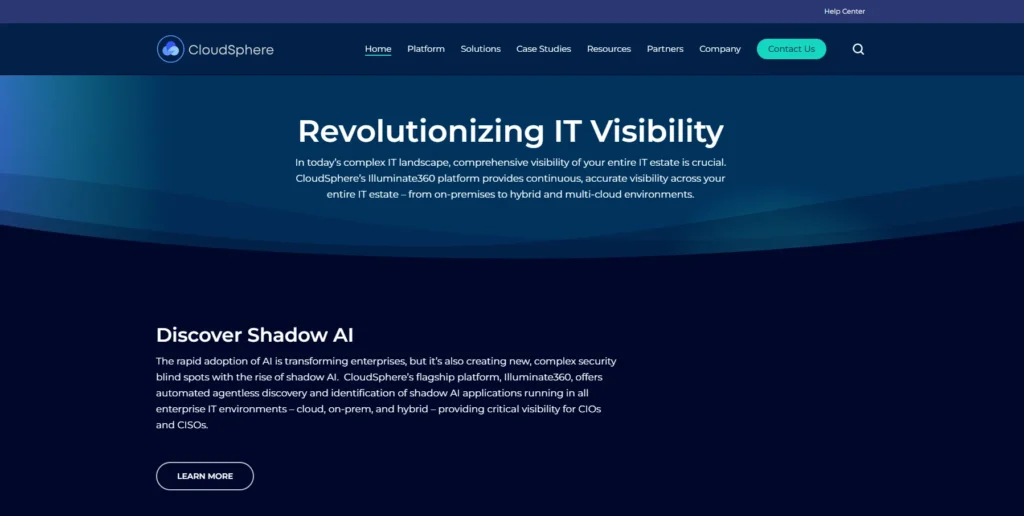
CloudCheckr, now part of NetApp, is a comprehensive cloud management and optimization platform that helps organizations gain visibility, improve security, and control costs in multi-cloud environments. It supports AWS, Azure, Google Cloud, and hybrid infrastructures, offering detailed cost analysis, rightsizing recommendations, and compliance tracking.
The platform’s strengths lie in financial governance and security posture management, enabling IT and finance teams to collaborate on cloud strategy. CloudCheckr automates compliance reporting for standards like HIPAA, GDPR, and ISO, ensuring regulatory alignment. Its inventory tracking and configuration monitoring tools provide full visibility into all cloud assets, reducing the risk of shadow IT. By combining cost optimization, security monitoring, and compliance automation, CloudCheckr empowers organizations to maximize ROI and maintain operational confidence across their cloud environments.
Key Features:
- Multi-cloud cost visibility and savings recommendations
- Automated compliance reporting
- Security posture monitoring
- Resource inventory and tracking
- Rightsizing and waste reduction tools
- Integration with AWS, Azure, GCP
- Configuration monitoring and alerts
Conclusion
The roles of Cloud Management Platforms assumed a critical importance to business organizations that needed to work through the confusion of multi-cloud and hybrid clouds. They present a unified source of managing resources, tracking performance, optimizing costs and ensuring compliance on various infrastructures. This applies to automation, cost governance, security, and scalability that allow businesses with CMPs to attain the complete potential of cloud computing and minimize the burden of operations.
Whether open-source tools such as ManageIQ or AI-driven tools such as Turbonomic, selecting the appropriate platform is based on an organizations size, cloud strategy, and operational priority. In the high-speed and high-stakes contemporary digital world, the implementation of a fitting CMP is no longer simply a technological choice but a strategic, adoption of an efficient, agile, and sustainably growing organization.
FAQs
What is a Cloud Management Hub?
Cloud Management Hub CMP is a software which manages, automates and optimises a cloud across different environments centrally.
What is the need of business CMP?
It ensures performance of the clouds, streamlines operations, costs, safeguards, and provides security.
Are CMPs able to integrate with more than one cloud?
The majority of CMPs accommodate AWS, Azure, Google Cloud, and hybrid clouds.
Can CMPs work with small businesses?
A lot of websites have scalable solutions suitable even to small businesses.
Are CMPs securer?
Definitely, they apply policies, check compliances, and realize weaknesses on-the-fly.